When the Dodge Challenger joined the “pony car” race in 1970, it could be had with all sorts of muscle under the hood, including a Magnum 440 V8 and the 426 Hemi. Detuning for fewer emissions and higher insurance costs had neutered these cars somewhat by 1973, but the 340 small block was still available. That’s the case with the seller’s car, a ’73 Challenger that’s rough to look at but is said to run. Located in Haskell, New Jersey, this Dodge is available here on eBay where the bidding has reached $2,850. Thanks, Larry D, for turning us on to this E-body Mopar.
The Challenger would be a brisk seller in its first year, 1970, at nearly 77,000 units, but the market was well saturated at that point. So, by 1973, the best the car could muster was 28,000 copies and sales would drop further in 1974, the last year of the original Challenger. The 340 cubic inch V8 was in its last year of production in ’73, with 8,435 finding their way into these Dodges. The 340 would be replaced by a 360 V8 in ’74 that didn’t have the same magic when it came to performance.
This car is going to be a “challenging” restoration in that there’s a lot of rust in the back half of the car, with the worst part being below the rear glass. This Dodge was probably painted Tor Red when new with a vinyl top, but a serious case of rust developed that has resulted in gaping holes above the trunk lid that have also damaged the trunk floor as well as the lower left quarter panel. The floorboards look a bit crusty but that may be just surface rust where carpeting once was.
The passenger cabin looks better than you might expect, although the seller believes the color of the upholstery and all the panels have been changed from white to green. When you get in, the numbers-matching V8 starts right up and idles well. The seller has gone through the TorqueFlite’s gears without moving the car because of bad brakes. And it reacts positively. We’re told the gas tank may have been replaced in the last couple of years.
This is a well-used car with a reported 117,000 miles. The ’73 Challenger 340 can be an automobile worth upwards of $40,000 according to Hagerty, but this one’s going to have to spend a lot of time in the body shop to get there. And, as they say, time is money, so you might be better off searching for a Challenger with fewer body issues.
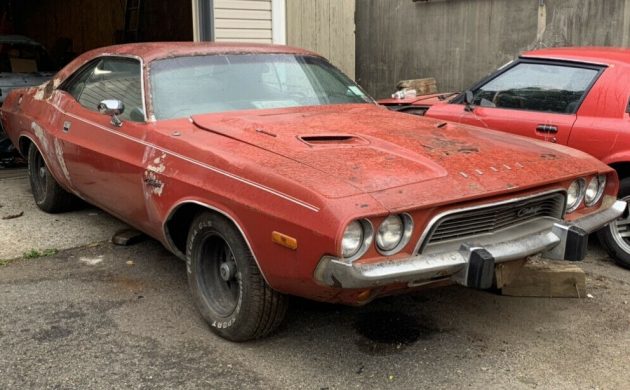
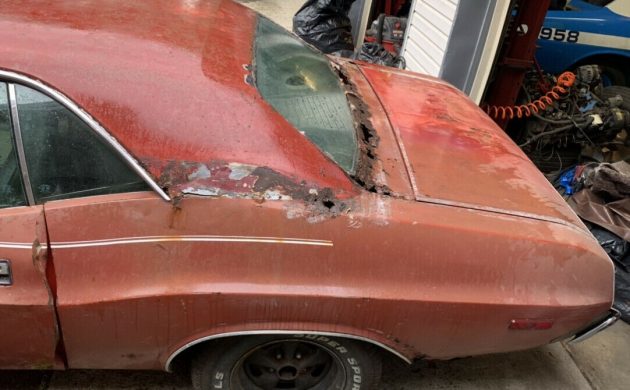
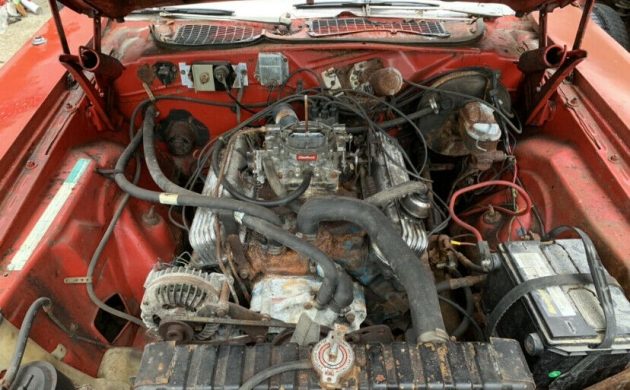
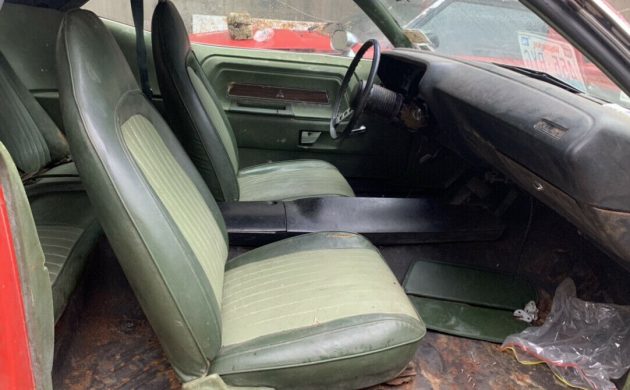
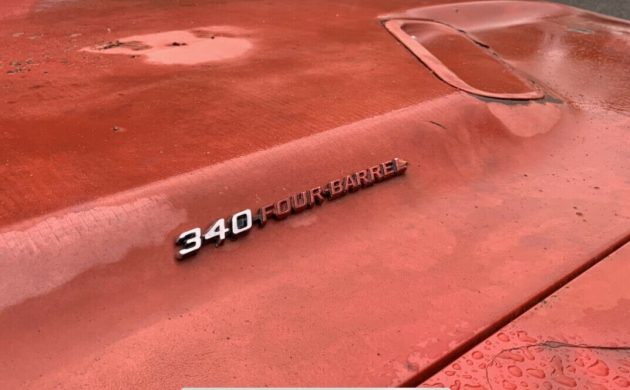


Trying to imagine the kind of owner who would swap a green interior into his red Challenger, and I really hope he was a larger, older gentleman with a flowing white beard.
Just my POV here, but the early Challengers were far better looking than the 73-74 models. To me the front end and rear ends were ruined by the MOPAR stylists…Change for the sake of change does not always work well.
This is a parts car here, not much worth saving to me.
YMMV
Safety Bumpers
I love the ’72-’74 Challengers far more than the ’70-’71. ’70-’71’s just look like the 50 trillion bloated modern Challengers in the front and rear.
The ’70 & now ’71 type front end on the current Chally do not give the modern car a bloated look – it’s from trying to make the modern Chally from the wrong old platform with high beltline & small side windows & too tall rear end body, instead of from scratch.
Most people would disagree with you on the look of the ’72-74 being superior to the ’70-71. I would not want to see Kowalski driving a ’72-74 chally – very odd angled tailites too, IMO.
I’ll take the Mitsubishi Starion behind it!
It’s an early RX-7, I think (Mazda alloys), but aye!
Rotary whirlywheels ahoy!
That’s an 83 rx-7, along with an rx-7 in the garage and a Nissan 240sx along the other side.
In view of the 5 mph front bumper regulation in 1973, how did Dodge get away with just slapping a pair of rubber pads on and calling it a day? All the other US makers had giant railroad trusses for bumpers that year.
Ralph, I think you mean the ’72-74 models.
BBishop, i believe Dodge, Plymouth(on Barracudas), & AMC(on Javelins) paid bumper fines because they knew these cars(unlike others) would be discontinued in ’75 & the fines were cheaper.
Oddly, the ’75-76 Bricklin was allowed no cat converter because i assume the company was in trouble & could not afford to change the floor from fiberglass to metal(unlike corvette) to deal with the incredible heat of the cat converter. & the car was very low production.
Why oh why did vinyl roofs have to be so popular?
Look at the damage they did.
Beauty is in the eye of the beholder, as they say, and to each his own. My eye tells me the 1970 Challenger was the cleanest best looking design, and the ’71 was a close second. I know the ’72 through ’74 designs have their fans, and no offense intended. This is just my opinion. I know my dad, a Dodge exec who brought home every Mopar muscle car he could get his hands on usually for a week at a time, would agree.
Our family cars were a ’70 and a ’71 Challenger, powered by that most common engine, the mighty 318 2bbl. I imagine if those cars around today they have a good chance of being hemi-powered R/Ts or T/As by now. Buyer beware.
The ’72, ’73, and ’74 look like someone was ordered to change the body style but was out of ideas, so they went for largemouth bass in front and taillights which look like giant Legos in the back. Sadly, this least appealing body style lasted three times as long as the two good ones. The mighty Challenger went out with quite a whimper due to failing sales, and who can blame the prospective buyers who could see the Camaro had retained much of its styling integrity through 1974? The Barracudas, in contrast, looked great from 1968 through the end.
Today, I rent my Challengers from Hertz for business trips, and enjoy filling the tank on a nice Hemi because I can put it down as a business travel expense. My favorites? The white ones.